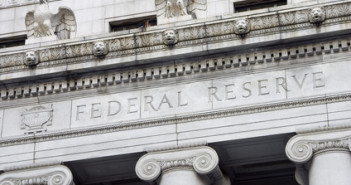A warmer than expected reading from the service sector of the American economy induced a “taper-on†feel to the market yesterday, with the S&P posting a modest loss on the day as the DXY edged back towards the 81 level. A report from Goldman Sachs had markets buzzing that the possibility of a Fed taper in December could be somewhat hedged by the FOMC dropping their unemployment threshold on forward guidance into the 5.5-6% range – a theory opined by two of the top economists on the FOMC.
A strengthening of a commitment to low interest rates through the Fed’s forward guidance could soften some of the blow that markets would experience when the Fed does decide to reduce its asset purchases, and the potential for this type of scenario now makes it more feasible for the Fed to taper before the consensus estimate of March 2014. The Loonie was under pressure for the majority of the North American session, with USDCAD leaking higher towards the top-end of the range we’ve seen over the last month.
The cautiously pessimistic investor sentiment from last session was quickly rebuked during Asian trade, after a spike in USDJPY to the high 98s helped propel the Nikkei to close up by 0.79%. The yen weakness that has driven risk appetite this morning is leeching into Europe, where equities are firmly in the green with the FTSE, Dax, and Stoxx up by 0.10%, 0.41%, and 0.71% respectively, despite a mixed-bag of economic data from the region. Retail Sales for the common currency bloc dropped by 0.6% over the month of September, worse than the 0.4% economists had forecast and erases all of the previous month’s gains. Germany factory orders over the same month registered an increase of 3.3%, far better than the 0.5% that had been expected and highlights the duel-speed economies of the core and periphery in the common-currency bloc. The service sector PMI for the zone during the month of October surprised to the upside coming in with a print of 51.6, boosted by beats from Germany and France, however the respective readings were still depressed and signalled slower expansion than from the previous month. On balance, the data delivered does little to alter the perception of the current economic landscape in the zone, only emphasizing the divergence in strength between the different economies throughout the bloc and supporting the rationale the ECB would be wise to look at additional ways of supporting the economic prospects of the zone. The EUR is slightly stronger against the USD this morning, managing to move its way back above 1.3500 ahead of the event risk surrounding the ECB.      Â
Speaking of the ECB, both the European Central Bank and Bank of England are due to release policy announcements first thing tomorrow morning, and while the broad market consensus is for both central banks to leave their policy prescriptions unchanged, the relative trajectory of the respective economies are far from similar. The tectonic plates of monetary policy in European Economic Community are shifting, with the recovery in the UK on somewhat firmer ground than the Bank of England may have originally anticipated, potentially causing Governor Carney to amend his forward guidance should inflation remain sticky at the top-end of the BoE’s desired range and the economic indicators continue to surprise to the upside (Industrial and Manufacturing Output both came in hotter than expected overnight – telegraphing a robust month of September.) The UK’s neighbours also find themselves in a slightly tricky situation, however what keeps them up at night is the treat of falling prices and an economic recovery yet to gain traction outside the core of the common-currency zone. With recent numbers from the Eurozone highlighting sluggish price pressure, the disappointing statistics have prompted speculation the ECB needs to provide further liquidity and monetary policy support to ward off the treat of Japanese-style stagflation. Of the central banks most likely to make a change to their current path of monetary policy, the ECB is the one most likely to move on interest rates tomorrow, and if we don’t see a cut in the refinancing rate, we will likely see ECB head Mario Draghi try and shore up hope for the zone on pledging monetary policy action should conditions worsen further. With inflation well below the ECB’s target of 2%, and unemployment elevated above 12%, it is likely the EUR has further room to fall against the USD and the GBP as monetary policy paths continue to diverge; if nothing else, a lower EUR will boost exports and stoke demand for the periphery nations, and work to encourage rising prices for the common-currency bloc.
Heading into the North American open, investors are treating yesterday’s sell-off as an opportunity to re-establish long positions, pushing equity futures higher ahead of the opening bell. WTI futures have managed to find some support after oil’s slide from late October, with the black gold for delivery in December is trading back above $94/barrel at the time of writing. The combination of sliding WTI and a widening WTI-WCS spread has been a detriment to the Loonie as of late, with the worsening terms of trade for Canadian producers stymieing demand for the Loonie. The commodity-linked currency is slightly stronger against the USD as we get set for the start of the North American session, although some of the Loonie strength has softened after a disappointing print in Building Permits in September. Building permits increased by 1.7% during the month of September in Canada, however this was below the median estimate of 6.0%, and only marginally eats into the 20% drawdown we saw in August. Ivey PMI is still yet to come and will provide Loonie traders some additional ammo, however USDCAD is looking quite comfortable within its recent range, with even a material deviation from expectations likely to drive the pair outside of 1.0480-1.0380.
Further reading:
ECB Preview: hints, but no action? 6 scenarios
service sector PMI for the zone
ECB Preview: hints, but no action? 6 scenarios



